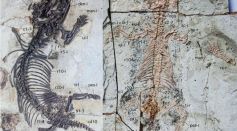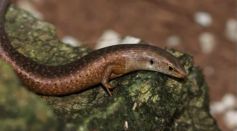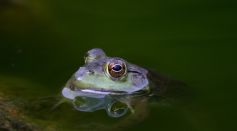Tags: Mammals

Scientists Unearth Fossils of Ancient Burrowing Mammal-Like Animals

Beavers Released Into Enclosure to Help Restore Wetland Habitats

Humans Could Someday Evolve to Having a Venomous Saliva

Octopus Pain is Not Just Physical, It’s Also Emotional, Study Says

Australia: Capital of Mammal Extinction Announces 13 More Species Have Now Gone Extinct
Capuchin Monkey Genome Study Unveils Clues to Long Life, Large Brains Thru Faeces DNA Extraction

New Study Examines Effect of Brain Size on Mammal Population Densities
Serrated Teeth: Study Reveals Connection Between Dinosaurs and Early Mammals
Wombats Too Have Biofluorescent Fur, Not Just Platypus
Sexual Aggression in Non-Human Mammals Might Be Costly for Females, Study Shows
Do Mammals Have Biofluorescent Fur?

Here's Why South America Filled With Mammals From North America
Mammals and Birds Were Not Warm-Blooded Not Until the Greatest Mass Extinction
American Pikas More Resilient Against Climate Change Than Previously Thought
200-Million-Year-Old Teeth Suggest First Mammals Lived Like Reptiles

The Neural Cruelty of Captivity: Keeping Large Mammals in Zoos and Aquariums Damages Their Brains
New Study Offers Insight on Human Impact on Mammal Extinction

Understanding the Universal Law of Conservation of Brain Connectivity

Female Mammals Live Longer Than Their Human Counterparts

Scientists Discover the Origin of Acoustic Communication
Most Popular

Ocean Acidification, Marine pH Change, and CO2 Absorption: How Coral Reef Damage and Shellfish and Plankton Impacts Threaten Marine Life

Solar Storm Risks: How Geomagnetic Storms Threaten Earth's Power Grids and Satellites

Dark Matter Explained: What We Know, What We Don't, and How It Shapes Cosmic Structure

Memory and Learning: How the Brain Stores, Retrieves, and Forgets Information




